- Home
- Peter Cawdron
Collision Page 5
Collision Read online
Page 5
“But you,” Goethe says. “You have direct access.”
“Me?” I’m sitting in what looks like a villain’s lair from a 1970s Bond film. This is a lot to take in. As for believing it, I’m still struggling with Ax being a Neanderthal, let alone the concept of colliding worlds. I’m not sure I can convince my father, but they’re right. He’s far more likely to take me seriously, or at least to get someone to look into this if I present a sound, logical argument, but he’d simply ignore them as crackpot conspiracy theorists. Our minds are cursed with a tendency to seize on irrational concepts. Who shot JFK, Roswell, the Moon landing, 9/11—but all too often, truth is stranger than fiction, even if it’s hard to believe.
I still have a bunch of questions, like how did they get here? Why did they choose this location, and not just northwest China—why our world? But I’m a medical doctor. Questions can wait. I’m used to jumping in and doing whatever it takes to extend life. I’ll help them. Ax is lost in our world, that’s clear. I start to speak when a woman rushes in, pushing past the military officers and whispering in Goethe’s ear.
He looks at me while listening intently to what’s being said. The woman leaves. Goethe picks up a remote control and points it at a wall-mounted television, saying, “It seems the time for talking is over.”
The television springs to life. Goethe switches channels, and settles on a news broadcast coming live from a helicopter somewhere over New York City.
“—explanation from the government. The city is going into lockdown. We’ve been ordered to clear the air space around the blast zone, but even as we leave the area, the devastation is clear. An entire city block destroyed in what some are describing as a nuclear explosion, only it’s not. There’s been no blast wave. The devastation ends as sharply as a paper cut.”
A camera on the helicopter zooms in on a section of Manhattan bordering Central Park. The buildings are gone. The road simply stops, disappearing into the dirt. Scorch marks radiate out from the center of the blast zone, scarring the ground. Trees lie flattened like dominos, only there shouldn’t be any trees that far from the park. At the heart of the circle, barely visible on the screen, is a tiny blue star.
A fighter jet roars over the city, banking as it surveys the damage.
“America is under attack,” the reporter says as the helicopter descends behind a building, obscuring the view of the devastation. “Governor Pellman has ordered the National Guard onto the streets, establishing an exclusion zone around the site of the terrorist incident.”
Chen asks, “What happened to them? To those inside?”
“They’re dead,” Goethe says with a somber voice. “The breach will have decimated both sides of the portal. It’s the same process that formed this cavern.”
“That’s hundreds of people,” I say. “Thousands. Dead.”
“It’s not the breach you should be worried about,” Flores says. “The real problem is what’s about to come through.”
Goethe says, “We need to talk to your father.”
To be continued
Afterword
Thank you for supporting independent science fiction.
As much as possible, I’ve endeavored to ground this entirely fictional story with accurate facts.
Yes, the plague really did break out in Yumen.
Yes, there really is a necropolis in the salt flats of Lop Nur in northwest China. In fact, there were more mummified remains recovered from Lop Nur than any single site in Egypt.
Yes, both the Wollemi pine and Coelacanth are examples of living fossils. Prior to their discovery, the only known evidence for either of them was in the fossil record. Both species are largely unchanged after hundreds of millions of years.
Yes, Neanderthals were intelligent. They were surprisingly close to humans and may have been able to speak. Neanderthals developed musical instruments (things like a simple flute), cared for their sick, performed burial rites, mastered fire and stone implements, and lived in social tribes. Although smaller than modern humans, their muscle texture and bone density suggests they would have had an iron grip for a handshake, but may have lacked the fine motor skills we have when it comes to things like writing, carving sculptures, etc. Fifty thousand years ago, there wasn’t much difference between the two dominant hominid species, and we still really don’t know why it was Homo sapiens and not Homo neanderthalensis that planted a flag on the Moon. Given the vast majority of Europeans have some Neanderthal DNA, it’s fair to say they helped.
Could Neanderthals have survived into modern times in some geographically isolated pocket in a manner similar to the Wollemi pine and the Coelacanth? It’s theoretically possible, but increasingly unlikely as there’s no virgin territory remaining. In 1988, a Shanghai newspaper reported that hair samples gathered from “wild men” in the mountains of central China was not human, but such claims are most certainly exaggerated. The Tibetan myth of the Yeti relates to the Mongolian myth of the Alma, or “Wild Ones,” which was an interesting point of departure for this story. What would it be like to interact with another hominid species? It’s a fascinating possibility, and one I hope you enjoyed exploring with me in this story.
When it comes to worlds colliding, we are well and truly in the realm of science fiction. There are some speculative ideas in the scientific community that the cosmic background radiation may contain evidence of colliding universes as the Big Bang unfolded, but there’s no definitive proof, and no reason to think such an event could occur again in the tiny region of space that makes up Earth, but it’s a fun, interesting storyline.
I hope you’ve enjoyed this book as much as I have. My thanks go to Jay Douglas from Vanquish Motion Pictures, who commissioned this story for possible development in television or movie format. If you’d like to see this story brought to life on the silver screen, get behind the book. Tell a friend. Leave a review online. Oh, and keep your eyes peeled for the next episode.
If you’d like to learn more about my writing and new releases, subscribe to my email newsletter.
Other Books by Peter Cawdron
Thank you for supporting independent science fiction. You might enjoy the following novels also written by Peter Cawdron.
ENDEAVOUR
“NASA prepared us for every eventuality on Mars, but they never prepared us for what could go wrong on Earth.”
Mankind has long dreamed of reaching out to live on other planets, and with the establishment of the Mars Endeavour colony, that dream has become reality. The fledgling colony consists of 120 scientists, astronauts, medical staff, and engineers. Buried deep underground, they’re protected from the harsh radiation that sterilizes the surface of the planet. The colony is prepared for every eventuality except one—what happens when disaster strikes Earth?
STARSHIP MINE
James Patterson is a gay accountant living in Keyes, Oklahoma—deep in the Bible Belt—the religious heartland of America. He’s also the first person to make contact with an extraterrestrial intelligence seeking to understand our world, and that makes him the most important person on the planet.
FREE FALL
Free Fall first appeared as a short story in The Z Chronicles, and serves as a prequel to What We Left Behind.
Jackson is an astronaut testing a prototype interstellar craft in deep space. When he returns home, there’s no one to greet him. Earth has fallen silent. Now he must decide—stay in orbit, watching a dead planet roll slowly by beneath his windows, or land on Earth and fight for life?
WHAT WE LEFT BEHIND & ALL OUR TOMORROWS
Hazel is a regular teenager growing up in an irregular world overrun with zombies. She likes music, perfume, freshly baked muffins, and playing her Xbox—everything that no longer exists in the apocalypse.
Raised in the safety of a commune, Hazel rarely sees Zee anymore, except on those occasions when the soldiers demonstrate the importance of a headshot to the kids.
To her horror, circumstances beyond her control lead her outside
the barbed wire fence and into a zombie-infested town.
“Five, Four, Three, Two—count your shots, Haze,” she says to herself, firing at the oncoming zombie horde. “Don’t forget to reload.”
ALIEN SPACE TENTACLE PORN
A 1950s hospital. Temporary amnesia. A naked man running through Central Park yelling something about alien space tentacles. Tinfoil, duct tape, and bananas. These are the ingredients for a spectacular romp through a world you never thought possible as aliens reach out and make contact with Earth.
MY SWEET SATAN
The crew of the Copernicus is sent to investigate Bestla, one of the remote moons of Saturn. Bestla has always been an oddball, orbiting Saturn in the wrong direction and at a distance of fifteen million miles, so far away that Saturn appears smaller than Earth’s moon in the night sky. Bestla hides a secret. When mapped by an unmanned probe, Bestla awakes and begins transmitting a message, only it’s a message no one wants to hear: “I want to live and die for you, Satan.”
SILO SAGA: SHADOWS
Shadows is fan fiction set in Hugh Howey’s Wool universe as part of the Kindle Worlds Silo Saga.
Life within the silos follows a well-worn pattern passed down through the generations from master to apprentice, caster to shadow. “Don’t ask! Don’t think! Don’t question! Just stay in the shadows.” But not everyone is content to follow the past.
THE WORLD OF KURT VONNEGUT: CHILDREN’S CRUSADE
Kurt Vonnegut’s masterpiece Slaughterhouse-Five: The Children’s Crusade explored the fictional life of Billy Pilgrim as he stumbled through the real world devastation of Dresden during World War II. Children’s Crusade picks up the story of Billy Pilgrim on the planet of Tralfamadore as Billy and his partner Montana Wildhack struggle to accept life in an alien zoo.
THE MAN WHO REMEMBERED TODAY
The Man Who Remembered Today is a novella originally appearing in From the Indie Side anthology, highlighting independent science fiction writers from around the world. You can pick up this story as a stand-alone novella or get twelve distinctly unique stories by purchasing From the Indie Side.
Kareem wakes with a headache. A bloody bandage wrapped around his head tells him this isn’t just another day in the Big Apple. The problem is, he can’t remember what happened to him. He can’t recall anything from yesterday. The only memories he has are from events that are about to unfold today, and today is no ordinary day.
ANOMALY
Anomaly examines the prospect of an alien intelligence discovering life on Earth.
Humanity’s first contact with an alien intelligence is far more radical than anyone has ever dared imagine. The technological gulf between humanity and the alien species is measured in terms of millions of years. The only way to communicate is by using science, but not everyone is so patient with the arrival of an alien spacecraft outside the gates of the United Nations in New York.
THE ROAD TO HELL
The Road to Hell is paved with good intentions.
How do you solve a murder when the victim comes back to life with no memory of recent events?
In the twenty-second century, America struggles to rebuild after the second civil war. Democracy has been suspended while the reconstruction effort lifts the country out of the ruins of conflict. America’s fate lies in the hands of a genetically engineered soldier with the ability to move through time.
The Road to Hell deals with a futuristic world and the advent of limited time travel. It explores social issues such as the nature of trust and the conflict between loyalty and honesty.
MONSTERS
Monsters is a dystopian novel exploring the importance of reading. Monsters is set against the backdrop of the collapse of civilization.
The fallout from a passing comet contains a biological pathogen, not a virus or a living organism, just a collection of amino acids. But these cause animals to revert to the age of the megafauna, when monsters roamed Earth.
Bruce Dobson is a reader. With the fall of civilization, reading has become outlawed. Superstitions prevail, and readers are persecuted like the witches and wizards of old. Bruce and his son James seek to overturn the prejudices of their day and restore the scientific knowledge central to their survival, but monsters lurk in the dark.
FEEDBACK
Twenty years ago, a UFO crashed into the Yellow Sea off the Korean Peninsula. The only survivor was a young English-speaking child, captured by the North Koreans. Two decades later, a physics student watches his girlfriend disappear before his eyes, abducted from the streets of New York by what appears to be the same UFO.
Feedback will carry you from the desolate, windswept coastline of North Korea to the bustling streets of New York and on into the depths of space as you journey to the outer edge of our solar system looking for answers.
GALACTIC EXPLORATION
Galactic Exploration is a compilation of four closely related science fiction stories following the exploration of the Milky Way by the spaceships Serengeti, Savannah, and The Rift Valley. These three generational starships are piloted by clones and form part of the ongoing search for intelligent extraterrestrial life. With the Serengeti heading out above the plane of the Milky Way, the Savannah exploring the outer reaches of the galaxy, and The Rift Valley investigating possible alien signals within the galactic core, this story examines the Rare Earth Hypothesis from a number of different angles.
This volume contains the novellas Serengeti, Trixie and Me, Savannah, and War.
XENOPHOBIA
Xenophobia examines the impact of first contact on the Third World.
Dr. Elizabeth Bower works at a field hospital in Malawi as a civil war smolders around her. With an alien spacecraft in orbit around Earth, the US withdraws its troops to deal with the growing unrest in America. Dr. Bower refuses to abandon her hospital. A troop of US Rangers accompanies Dr. Bower as she attempts to get her staff and patients to safety. Isolated and alone, cut off from contact with the West, they watch as the world descends into chaos with alien contact.
LITTLE GREEN MEN
Little Green Men is a tribute to the works of Philip K. Dick, hailing back to classic science fiction stories of the 1950s.
The crew of the Dei Gratia set down on a frozen planet and are attacked by little green men. Chief Science Officer David Michaels struggles with the impossible situation unfolding around him as the crew members are murdered one by one. With the engines offline and power fading, he races against time to understand this mysterious threat and escape the planet alive.
REVOLUTION
How do you hide state secrets when teenage hacktivists have as much quantum computing power as the government? Alexander Hopkins is about to find out on what should have been an uneventful red-eye flight from Russia. Nothing is what it seems in this heart-pounding short-story from international best selling author Peter Cawdron.
HELLO WORLD
Hello World is a short story set in the same fictional universe as Alien Space Tentacle Porn.
Professor Franco Corelli has noticed something unusual. The twitter account @QuestionsLots is harvesting hundreds of millions of tweets each day, but never posting anything. Outwardly, this account only follows one other twitter account—@RealScientists, but in reality it is trawling every post ever made by anyone on this planet. Could it be that @QuestionsLots is not from Earth?
In addition to these stand-alone stories, Peter Cawdron has short stories appearing in:
The Telepath Chronicles
The Alien Chronicles
The A.I. Chronicles
The Z Chronicles
Tales of Tinfoil
WELCOME TO THE OCCUPIED STATES OF AMERICA
Seven years after the invasion of the grubs, 110 million Americans have been displaced by the war, with over 50 million dead. Ashley Kelly was crippled by a cluster bomb. While the world crumbled, she spent seven years learning to walk again, and she’ll be damned if she’s going to lie down for anyone, terrestrial or extraterrestrial.
Table of Contents
Collision
Chapter 01: Code White
Chapter 02: City of the Dead
Chapter 03: Collision
Afterword
Other Books by Peter Cawdron

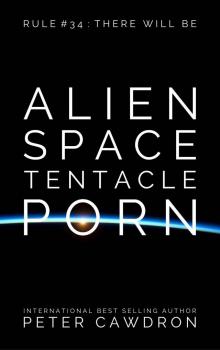 Alien Space Tentacle Porn
Alien Space Tentacle Porn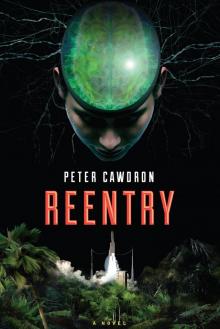 Reentry
Reentry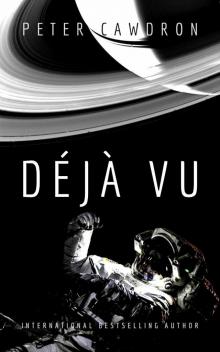 Déjà Vu (First Contact)
Déjà Vu (First Contact)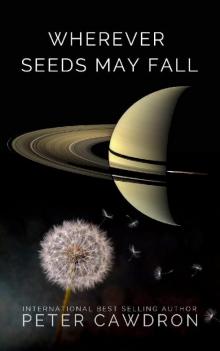 Wherever Seeds May Fall (First Contact)
Wherever Seeds May Fall (First Contact)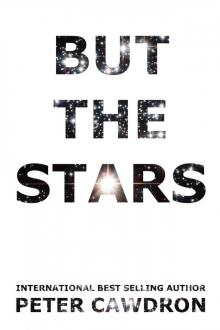 But The Stars
But The Stars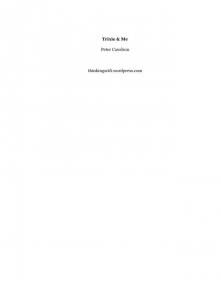 Trixie & Me
Trixie & Me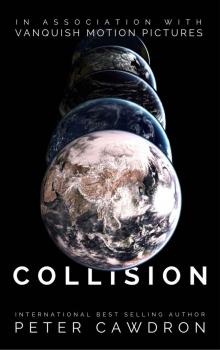 Collision
Collision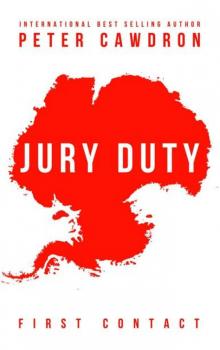 Jury Duty (First Contact)
Jury Duty (First Contact)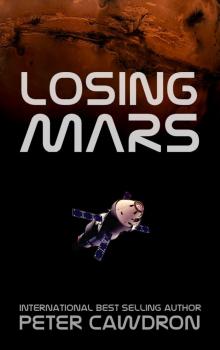 Losing Mars
Losing Mars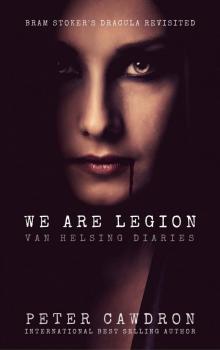 We Are Legion (van Helsing Diaries Book 2)
We Are Legion (van Helsing Diaries Book 2) Van Helsing's Diaries (Books 1-3): Nosferatu
Van Helsing's Diaries (Books 1-3): Nosferatu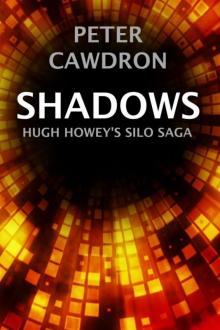 Shadows
Shadows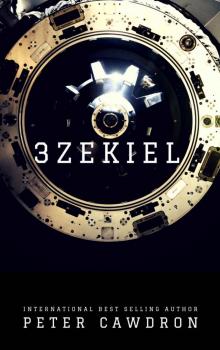 3zekiel (First Contact)
3zekiel (First Contact) Vampire (van Helsing Diaries Book 1)
Vampire (van Helsing Diaries Book 1) Xenophobia
Xenophobia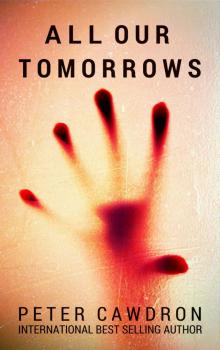 All Our Tomorrows
All Our Tomorrows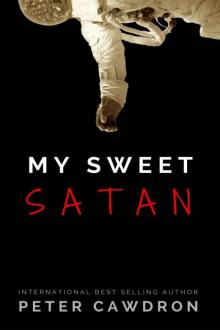 My Sweet Satan
My Sweet Satan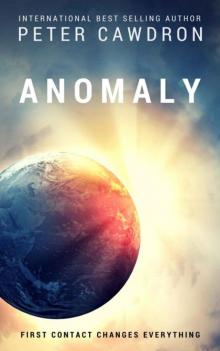 Anomaly
Anomaly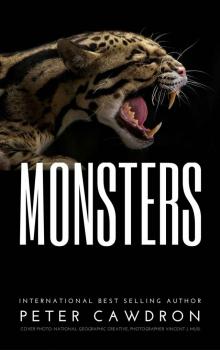 Monsters
Monsters